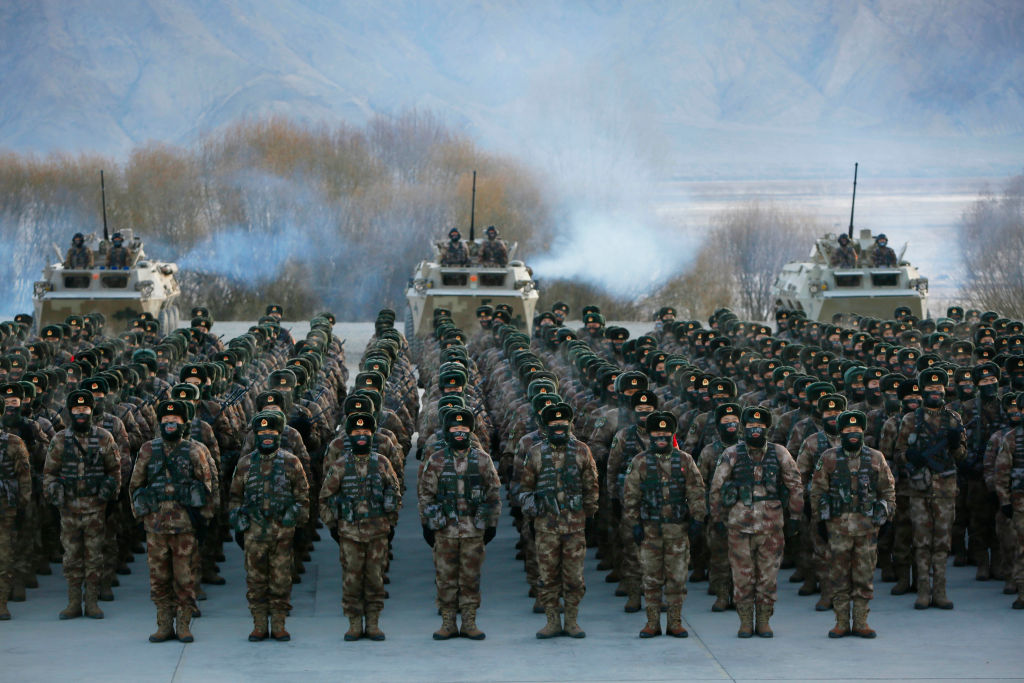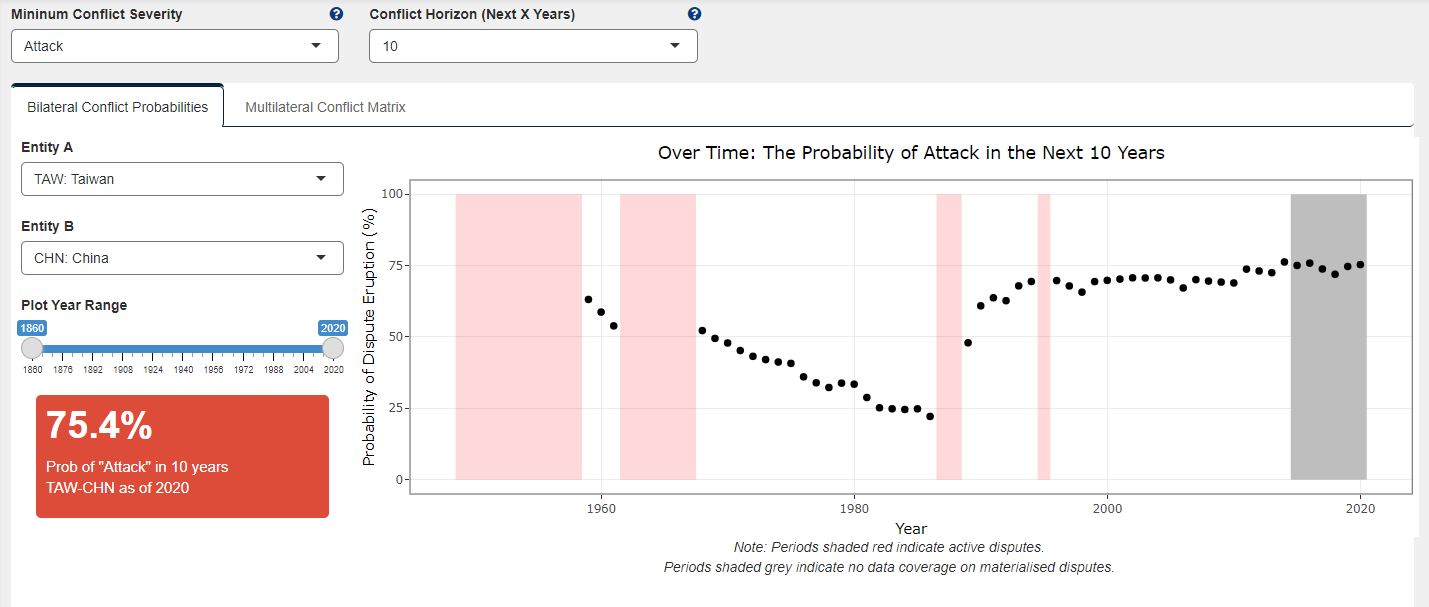
There’s a wealth of data on the history of military conflicts, which have caused many millions of deaths in the past century, but there’s comparatively little quantitative research forecasting the frequency and severity of wars.
As an investor in global financial markets, our firm is constantly grappling with the prediction business. Last year we created worldwide Covid-19 forecasting models that enabled us to anticipate a much earlier than expected peak in the first wave of infections in April 2020.
We have now developed research that can be used to assess the empirical likelihood of different types of conflicts occurring.
For the past decade, the biggest risk we have sought to understand is the spectre of war between the United States and China. The probability of such a conflict appears to have accelerated under the hardline presidency of Xi Jinping. Many experts, including John Lee, Oriana Skylar Mastro, Rory Medcalf and Ross Babbage, who consult to us, have put the risk of a lower-intensity conflict at around 50%.
Our quantitative research supports that.
A team of Kai Lin, Nathan Giang, James Yang and me has spent 12 months drawing on 160 years of conflict data and using a range of techniques to predict the probability of different types of conflicts of varying severity.
The goal of our research is to stimulate further academic study and inject greater objectivity into public debates about the risk of military conflicts. Such debates almost always involve highly subjective opinions that often lack a data-centric, evidentiary basis and empirical testing.
The conclusions focus on horizons of 12 months, five years and 10 years. This research, covering most countries, is outlined in a technical paper and a summary (both available here).
Military acts by a nation directed towards the government, officials, forces, property or territory of another state are known in the academic literature as ‘militarised interstate disputes’, or MIDs. In our forecasting models, we classify MIDs into increasing tiers of severity: a threat to use force; an actual use of force; an attack, clash or raid; and an all-out war with a minimum number of deaths.
To tackle the forecasting problem that warfare represents, we applied scientific, statistical and machine-learning techniques to data on MIDs.
Significantly, our research implies that the likelihood of a low-intensity military conflict between Taiwan and China over the next 10 years has trended higher over time towards a probability of around 75%.
Probability of low-intensity conflict between Taiwan and China

Source: War Lab.
Accounting for global alliance networks in our modelling, the probability of a low-intensity military conflict over the next decade between the US and China is also elevated, at around 46%, which reconciles with the estimates offered by the more hawkish analysts.
Over that period, the modelling indicates that the likelihood of low-intensity conflict between the US and Russia is also high, at 30%; between China and Russia, 44%; between China and Japan, 46%; and between China and India, 55%.
When we raise the conflict-intensity threshold from small-scale attacks to outright war, the probabilities decline noticeably, although they remain material. Our modelling suggests, for instance, that China and India have a 22% likelihood of engaging in a war in the next 10 years.
The likelihood of outright war between China and the US is 12%; between China and Taiwan, 11%; and between China and Japan, 10%. Any such war would have potentially cataclysmic consequences.
The risk of outright war between the US and Russia is, interestingly, much lower, at 2%.
These models have many potential applications, including strategic planning, government foreign policymaking, political decision-making and financial risk management.
And beyond providing a better understanding of the threats we face, disclosing the real empirical probability of conflict could help decision-makers convince communities not to undervalue defence spending and the catastrophe insurance it provides.
To facilitate discussion and education about the risks of conflicts, we have developed an interactive graphical user interface that is publicly available. It houses one of our simpler forecasting models and provides data visualisations of the historical probabilities of conflict between individual nations or entities, and animations of the shifts in national military capabilities over hundreds of years.
In a 2012 paper, the Swiss academic Thomas Chadefaux observed:
Unfortunately, the prediction of war has been the subject of surprisingly little interest in the literature, in marked difference to a wide range of fields, from finance to geology, which devote much of their attention to the prediction of extraordinary—black swan—events such as financial crises or earthquakes.
It’s beyond time to introduce more advanced quantitative methods to inform the debate about the conflict risks we face.

